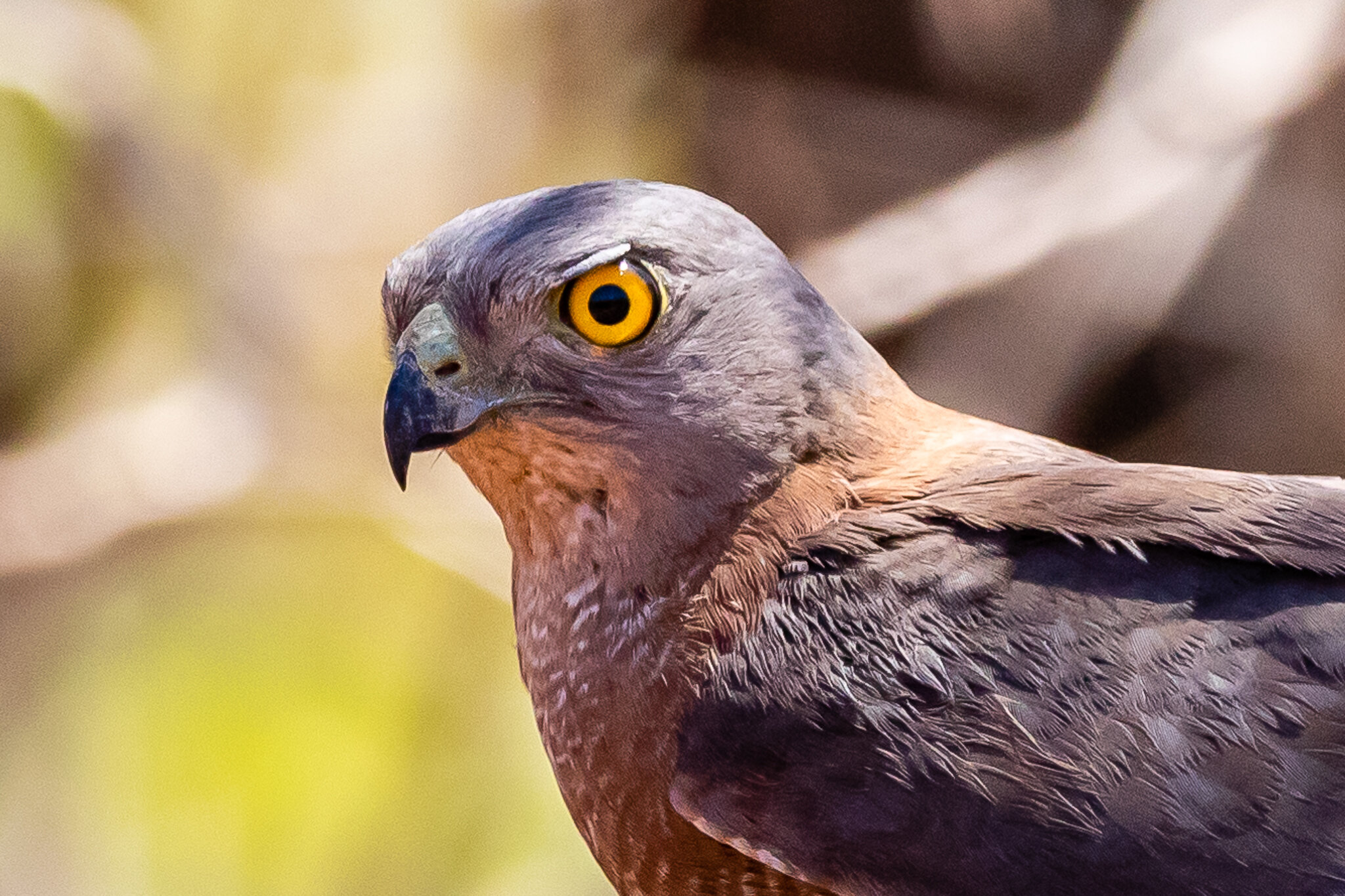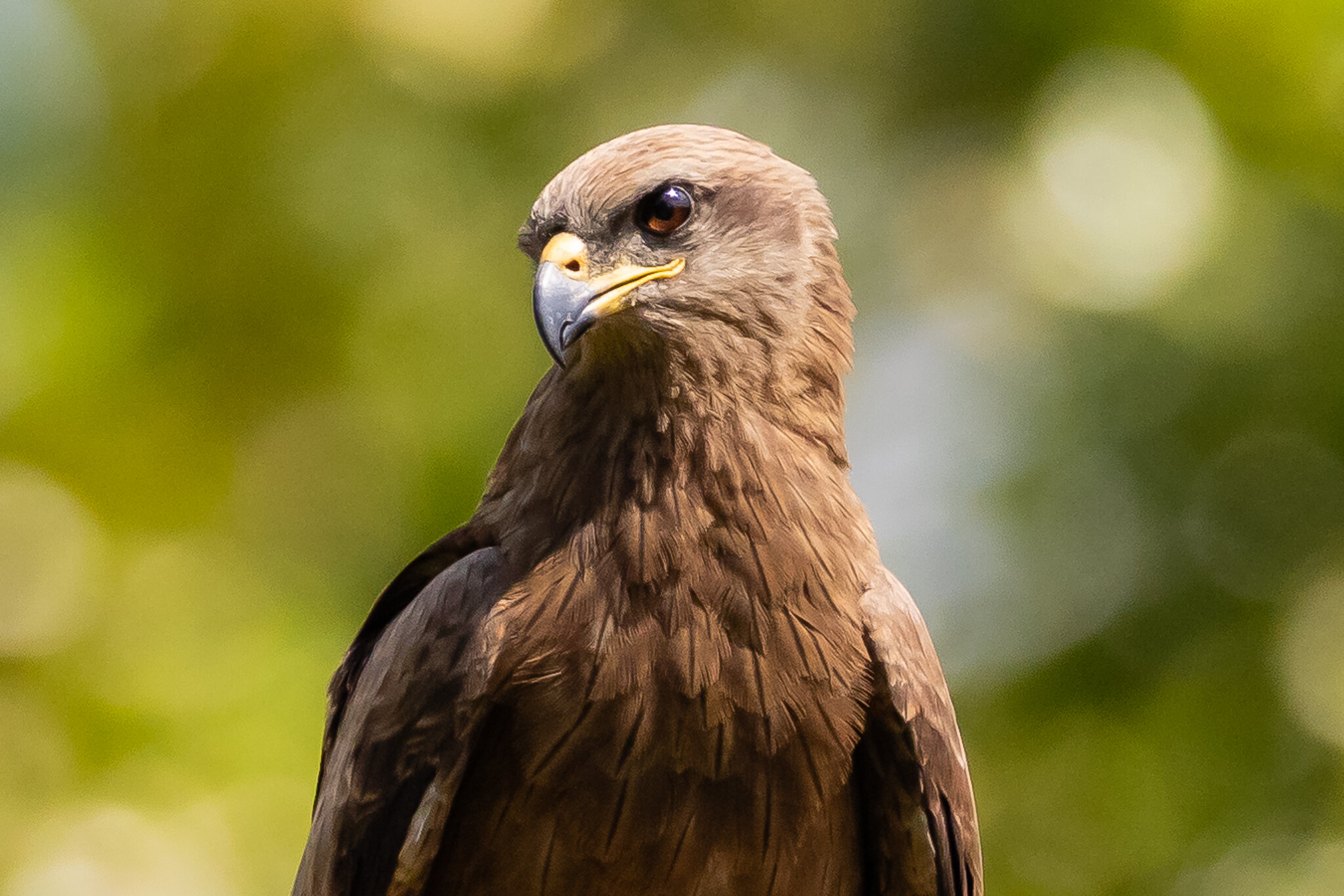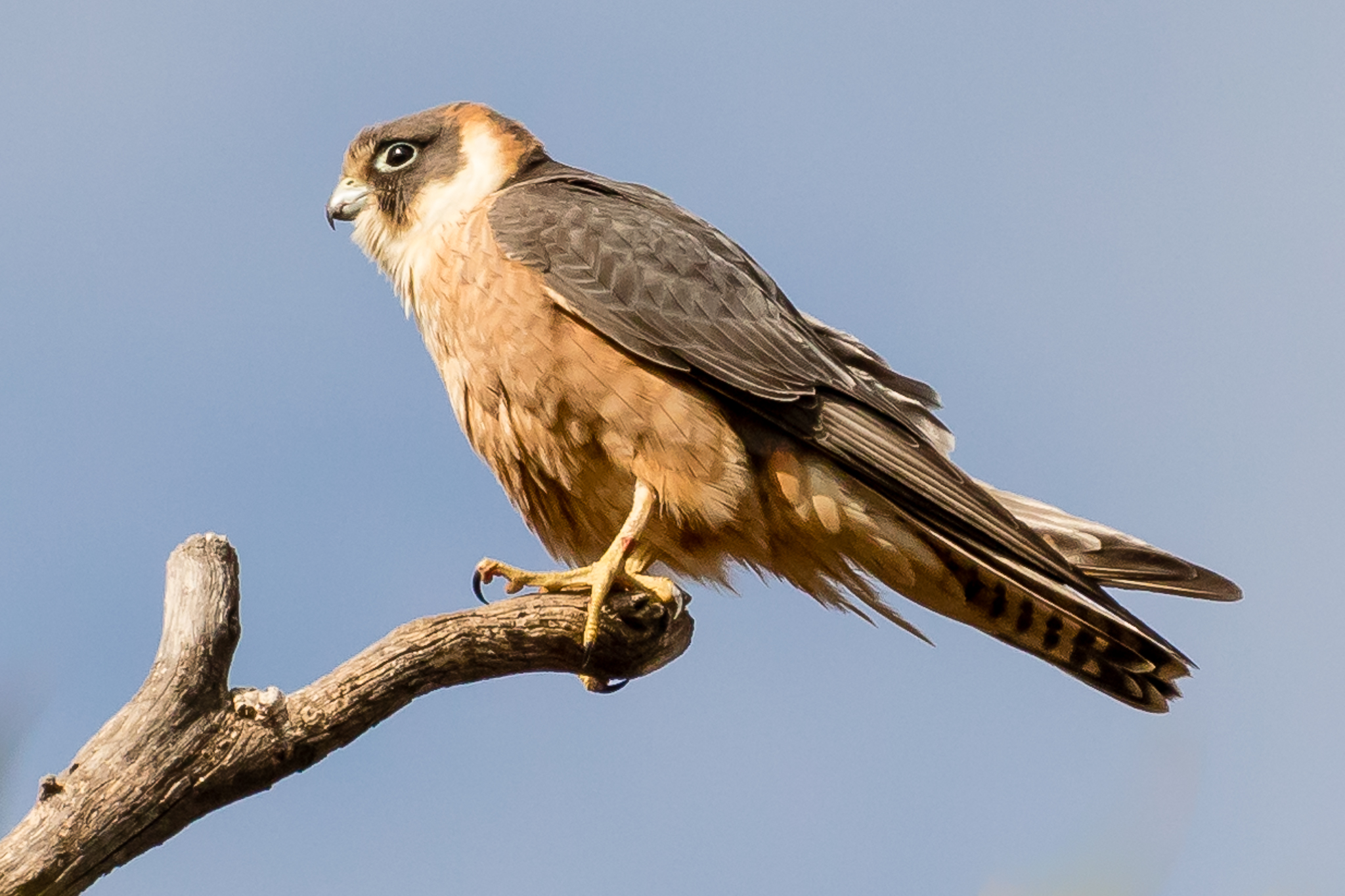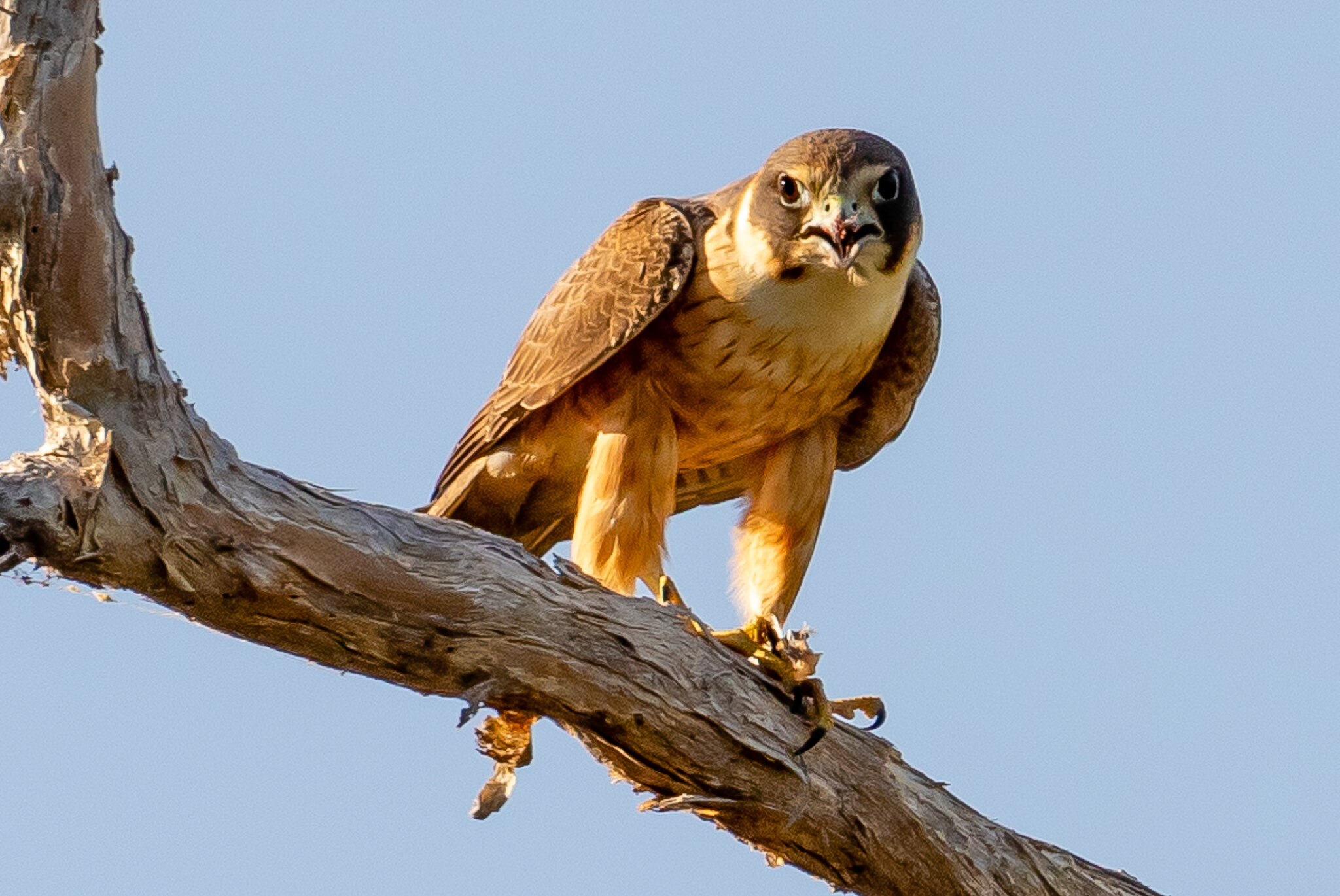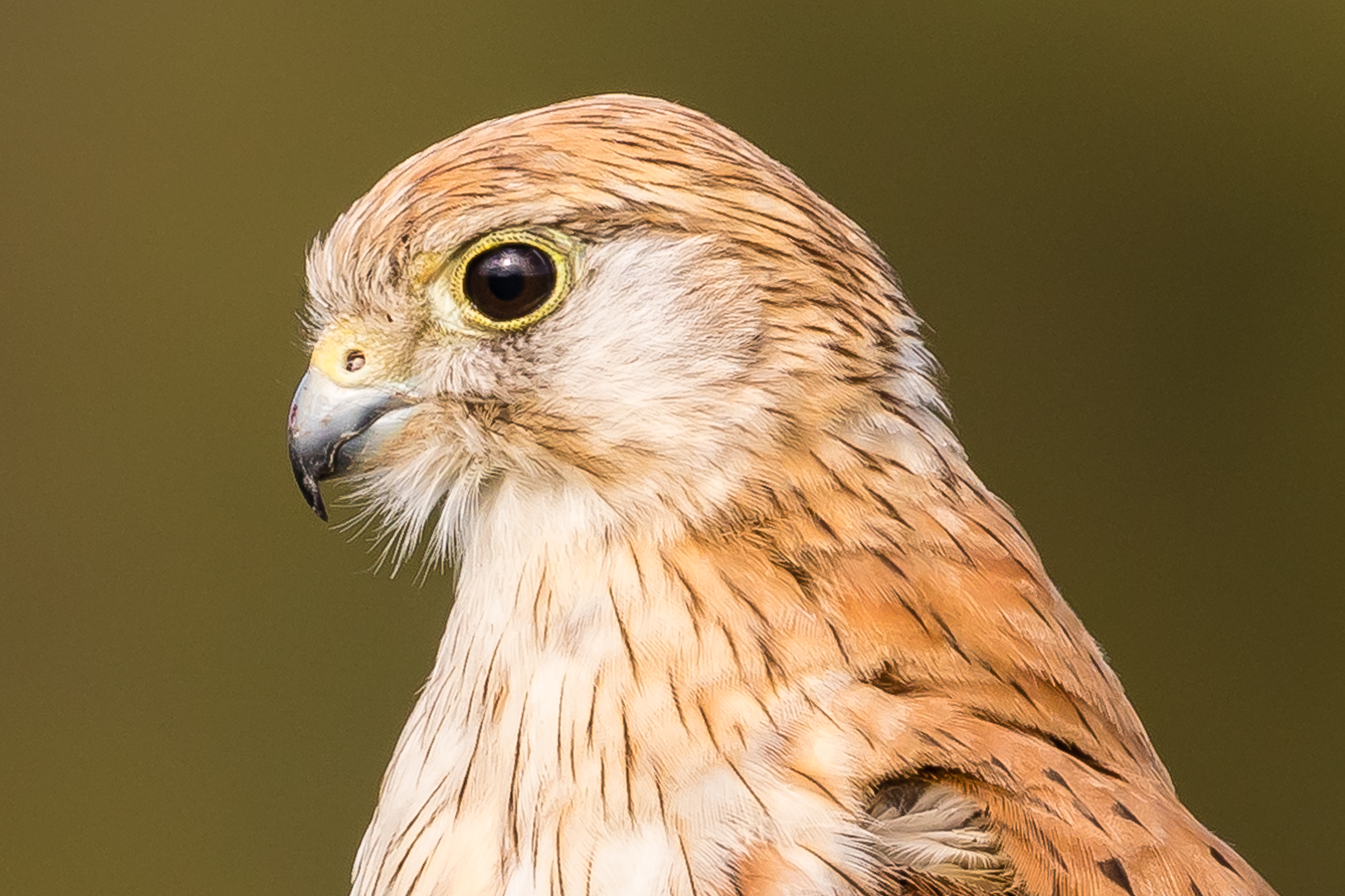Raptors
There are 36 Australian raptors (also known as Birds of Prey). They include 18 members of the Accipitridae family (Kites, Harriers, Goshawks, Eagles, Buzzard, Pacific Baza), and 7 members of the Falconidae family (Falcons, Kestrel). There are 11 owls, 5 are from the Tytonidae family (Masked Owls, Grass Owl, Barn Owl) and 6 from the Strigidae family (“True owls” - all Australian “True owls” are Hawk-owls from the genus Ninox).
Photo: Birding handbooks say that the Brown Goshawk (50 cm) can be distinguished from the smaller Collared Sparrowhawk by its powerful beak and menacing glare.
The Powerful Owl (65 cm) is a Hawk-owl found along Australia’s south-east coast. It is Australia’s largest owl and feeds on medium sized mammals, especially possums.
Black Kites (55 cm) are seen over large parts of Australia and are especially common in the tropical north. Black Kites are common worldwide and range across Europe, Africa and Asia.
A Black Kite soars above Broome looking for small mammals, lizards and insects. Black Kites feed near bush-fires and have been seen to carry burning embers to spread the fire.
Here seen at the Broome wharf, Brahminy Kites (50 cm) are birds of the northern coasts.They scavenge on carrion and feed on small fish, reptiles and insects
Whistling Kites (60 cm) are common in the north but migrate south in summer. They can be identified by the characteristic “M” pattern underneath their wings.
Whistling Kites hunt rabbits, small mammals and birds but also scavenge as seen in this photo from Darwin. They are named for their characteristic whistling call.
The Square-tailed Kite (55 cm) is found across northern, west and eastern Australia but is quite rare. Here seen using its wide wings (1.3 - 1.5 m) for a gliding descent to pounce on a small bird.
Swamp Harriers (60 cm) are found widely across Australia’s wetlands. They glide close to the water and descend on birds, reptiles and rabbits.
The Spotted Harrier (60 cm) inhabits most of Australia preferring arid to semi-arid open country, flying low searching for ground birds like quail and also rodents.
Black-shouldered Kites (38 cm) are often seen hovering in open areas before dropping on prey; rodents and insects. Common across coastal Australia, sometimes they follow mice plagues.
Australia’s largest raptor is the Wedge-tailed Eagle (0.9 -1.1 m). Common across rural and arid Australia, the Wedge-tailed Eagle’s main food sources are rabbits, hare, and carrion.
At Sydney’s Taronga Zoo, Bird Show participant, the Black-breasted Buzzard (55 cm), demonstrates how to break an egg with a stone - a technique used by Buzzards in the wild. Buzzards are found in the northern arid areas hunting for reptiles, small birds and carrion.
Often seen soaring high at the beach all around Australia. The White-bellied Sea-Eagle (85 cm) feeds on fish, birds and mammals. Skilled hunters, they attack birds as large as a swan.
The Eastern Osprey (65cm) also inhabits most Australian coastlines. Osprey feed on fish which they catch by dropping with talons foremost, sometimes submerging with their prey.
A White-Bellied Sea-Eagle swoops low with its Australian Raven prey to evade attack from the raven’s companion.
This Black-shouldered Kite is helping the farmer keep mice numbers down.
The Pacific Baza (45 cm) with its yellow eye and crest is a very distinctive hawk seen across Australia’s north-east. It feeds on insects, lizards and small birds.
There area several varieties of Southern Boobook (35 cm); found widely across Australia. This Boobook was photographed in a south coast New South Wales garden.
The Barking Owl (45 cm) spreads across the north and very south of Western Australia and most eastern states. They feed from clearings on medium size mammals, small birds, and insects. Named for their call which sounds much like a small dog barking.
Barn Owls (40 cm) are found worldwide and are seen across most of Australia. They glide silently from their perch to catch small mammals, birds and insects unaware of their presence.
The Peregrine Falcon (50 cm) dives on its prey, mainly other birds, at speeds up to 300 kph, the world’s fastest bird. It clubs its prey with its large feet. Found Australia wide.
Even the ultimate hunter feels vulnerable drinking water. This bird had a good look round before entering the water in this intermittent lagoon after dusk.
The Brown Goshawk (50 cm) is a fast and agile hunter, covering most of Australia. They dive from their perch to catch small mammals, birds, reptiles and insects.
Grey Goshawks (55 cm) are heavily built but also agile hunters taking birds on the wing and rabbits on the run. They are seen across coastal regions of the east and north.
The Red Goshawk (60 cm) is Australia’s largest and rarest goshawk, found across the north and seen less and less in the southern part of its range. Feeds on birds large and small.
The Australian Hobby (35 cm) is a small falcon seen across most of Australia in lightly timbered or open country.
This Australian Hobby has retreated to a high perch to consume the small bird it caught on the wing. Sometimes Hobbys eat in the air.
The Nankeen Kestrel (35 cm) hovers skillfully over open country watching for small mammals (especially mice), small birds, lizards and insects. Present over most of Australia.
The Brown Falcon (50 cm) is a common bird in country Australia.It feeds on the ground on reptiles, grasshoppers, beetles and mice.
The rarely seen Black Falcon (55 cm) soars close to a Northern Rivers NSW riverine wetland, preying on smaller birds with its oversize claws. The Black Falcon ranges across most of Australia’s arid regions and occasionally closer to the coast.
